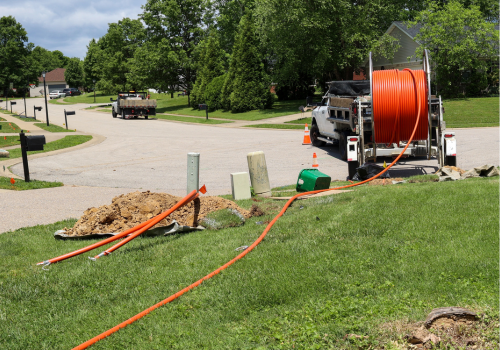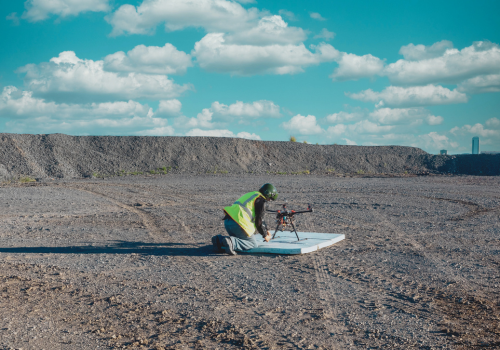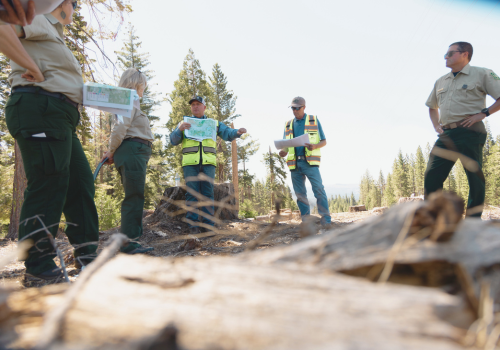Fiber optics is the future of the telecom industry as consumers, businesses, and data centers increase demand for high-speed communications able to transmit voice, data, and images. Broadband Now reports that as of June 2023, 55.6% of all households have access to fiber. In its November 2023 newsletter, the Fiber Optic Association estimates the value of the worldwide fiber network is between $125 and $250 billion per year for the cable plant alone. If communications equipment is included the association reports that the figure would more than double.
While communications, including internet (as well as connecting and use in data centers) and telecom (wireline and cellular), dominate the fiber optic market, transportation, power, oil and gas, and water and wastewater are also significant users.
How utilities are using fiber optics
Growth in the market has been driven by increased deployment of all-fiber networks (fiber-to-the-home—FTTH—and fiber-to-the-premises—FTTP) to connect homes and businesses to high-speed Internet. An increasing number of connected devices such as smartphones, wearables, tablets, and machinery are also driving usage.
According to Jim Hayes, President of the Fiber Optic Association and active participant in the fiber optic market since its inception, power utilities were early adopters of fiber. “They started using fiber optics in the early 1980s for communications in substations,” says Hayes.
Fiber optic cables contain strands of glass only slightly thicker than a human hair and carry communication signals using pulses of light generated by small lasers. One of the biggest advantages of fiber optic cables is the speed, bandwidth, and distance they can carry signals. “The first fiber optic networks were running at 145 megabits per second. Now we’re seeing networks running at a total capacity of 13.5 terabits per second,” says Hayes. This is more than 1,000 times the capacity of copper (or wireless).
However, for power utilities, the initial attraction to fiber optic cable came from its resistance to electromagnetic interference – with glass being an effective insulator. “By the mid-1980s, electric utilities were installing all new transmission lines where the ground wire had optical fiber in it,” says Hayes. “The fiber was used for grid management and sometimes leased to communications companies.”
Today power utilities are increasing their usage of fiber optic cable to manage an increasingly complex network composed of micro-grids and renewable energy sources. In 2022, renewable energy sources accounted for 21% of the United States' electricity production at utility-scale facilities. This percentage is expected to continue to grow. “Both renewable energy and micro-grids require careful monitoring in order to integrate them into the grid,” says Hayes. “It's not an easy process that requires a lot of communication. For example, every wind turbine is connected on a cable that carries the power out but also carries fiber for communications.”
In the oil and gas industry fiber is used in distributed acoustic sensing (DAS), distributed temperature sensing (DTS), and distributed vibration sensing (DVS). DAS and DVS technology use optical fibers to monitor and analyze acoustic signals generated by activities, such as fracturing, drilling, and production. DTS technology uses optical fibers to measure temperature variations along the entire length of a fiber optic cable. This provides insight into the performance and condition of oil and gas wells. According to Polaris Market Research, the globally distributed fiber optic sensor in the oil and gas market is expected to reach $870.92 million by 2032.
In the water and wastewater applications fiber optic cable is being used to enable Smart Water Management SWM systems that leverage IoT to provide real-time, automated water data analysis. While still in the early stages of development, fiber optics also shows promise for leak detection in water systems using DAS, fiber optic accelerometers, and by measuring temperature increases near leaks.
The role of utilities in closing the digital divide
The pandemic shed light on rural communities and low-income individuals without access to the Internet. In addition to supporting their own operations, electric utilities are in a unique position to help close the digital divide by building fiber networks across their electrical assets for the purpose of providing broadband access to customers. According to the National Rural Electric Cooperatives Association, a non-profit organization that represents over 900 rural electric cooperatives and public power districts in the United States, 250 electric cooperatives are deploying or developing plans to deliver broadband service to their consumers.
Utilities such as Anza Electric Cooperative, with a service area of nearly 700 square miles in a high desert in California, are providing small communities, formerly without phone, cell phone, or internet, with access to a state-of-the-art fiber optic network.
According to Hayes, power utilities have been leasing their fiber networks to broadband service providers for years. However, providing the service itself represents a relatively new revenue opportunity. Unfortunately, it also requires significant investment. According to Compulink, aerial installation of fiber optic cable costs an average of $5 to $15 per foot, while underground installation ranges from $15 to $30 per foot. Hayes says installing or “overlashing” aerial fiber optic cable is the least expensive option at approximately $1 to $4 per foot. With the infrastructure already in place to deliver high-speed internet, local coops have an advantage over other providers.
Funding drives investment in fiber
The Infrastructure Investment and Jobs Act (IIJA) of 2021 authorized $65 billion for broadband, including $43 billion for grant programs through the National Telecommunications and Information Administration to support broadband equity, access, and deployment. In addition to the Broadband Equity, Access, and Deployment (BEAD) program, the Rural Digital Opportunity Fund will allocate over $20 billion in funding over the next decade to support the deployment of high-speed broadband networks in unserved and underserved rural areas.
The IIJA included about $5 billion for electric utilities related to grid resilience. Another $60 billion worth of funding is available for cybersecurity projects.
Communities encourage economic development with fiber networks
Cities such as Chattanooga, Tennessee, have invested in fiber optic internet deployment with the goal of positioning the city as a tech-savvy leader. The community-owned fiber optic network known as “EPB Fiber Optics,” provides residents and businesses with lightning-fast internet speeds. A 2022 economic analysis showed the high-speed broadband network built by Chattanooga's electric utility generated nearly $2.7 billion in economic benefits since it was built in 2012.
The labor challenge
In addition to cost, one of the challenges for utilities in deploying fiber optic cable is labor. To help the fiber optic industry identify its labor needs, Hayes worked with the Bureau of Labor Statistics to create a new job category for telecommunications technicians, including fiber and wireless techs. Before this, technicians were lumped in with electricians. Today, nearly 300,000 workers are employed in the field with about 115,000 people qualified as fiber optic technicians. BLS reports that employment of telecommunications technicians is expected to grow 6% from 2022 to 2032, which is faster than the average for all occupations. As a result, the industry will need to fill 31,500 openings each year, on average, over the decade.
“The Fiber Optic Association was started to build a fiber optic workforce,” says Hayes. He believes the workforce needs to grow about 10% per year to meet demand.
With its ability to transfer large amounts of data at lightning speed and resilience to electromagnetic interference, fiber optics will continue to play an important role in helping modern utilities not only manage their own infrastructure but to provide affordable broadband service to those who have been previously unable to access it.
Subscribe to The Utility Expo monthly newsletter to receive more industry insights like this.
Read Next
Mid-Year U.S. Utility Infrastructure Outlook












